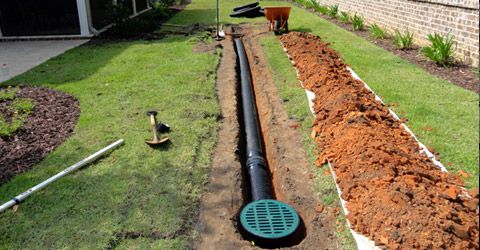Installing drainage piping needs some little degree of knowledge about exactly how to determine inclines and qualities. If you have the ability to make use of a building contractors level it will make your setup that a lot easier. You need to first identify the size of the pipeline you are most likely to need to bring the amount of water in a storm and afterwards include roughly 50% more capacity for 100 year tornados. If you can get by with a four inch pipe, utilize a six inch pipeline to ensure the pipeline can bring practically any type of amount it requires to handle. We will certainly use a 6 inch size pipeline for this discussion. If you are starting your pipe at a catch container or other collection point, you will require to determine the height of the outlet of the basin about the elevation of the factor where you desire the pipeline to departure or end. Using a contractor’s level, it is performed in this fashion.

Set up the level and tripod in a placement where you can see both the starting point and the opposite end of the pipeline. You intend to select something in the work area that cannot move and set this as your bench mark height. A very large rock with an area you can mark and return to over and over to measure. A side lug on a fire hydrant functions. Do the usage the leading nut as this move when the hydrant is opened. As soon as the level is itself leveled, your assistant will place a pole or measuring tape on the rock measuring from the rock upwards. Browsing the building contractor’s level, you can see where the cross hairs in the degree struck the tape measure. Lets claim the forty inch mark. Write down the number 40 and that is called the HI or instrument height. Now utilizing the measuring tape once again, step from the bottom of the hole in the container, read the tape again and get a Drainage Installer in Toronto measurement.
Allows state this time it is fifty inches. Write that down too and this is called your front view. Subtract the HI from the front view and you will certainly get 10 inches obviously. Now using the tape, take one more reading or sight at the leave point of the pipeline albeit a free air factor or a hole in an additional basin. This dimension is sixty inches. Deduct this measurement from the HI and you obtain twenty inches. That means there is a ten inch difference in height in between the two basin openings. You need to now gauge the distance between the two containers or a container and the outlet point. In this instance we will certainly use eighty feet. At one eighth inch per foot of slope over eighty feet you would need one inch of incline for every eight feet. Eight divided right into eighty is ten so your ten inches of total height difference works penalty. Currently we know we will have to preserve a one inch decrease (or increase) in the pipe altitude every eight feet. Many drivers favor to dig uphill preferably so you will certainly more than most likely be subtracting an inch from each degree shot you take. As your driver digs, every eight feet you will certainly require to take a brand-new shot to assure that he is sloping the trench bottom uphill one inch every eight feet.